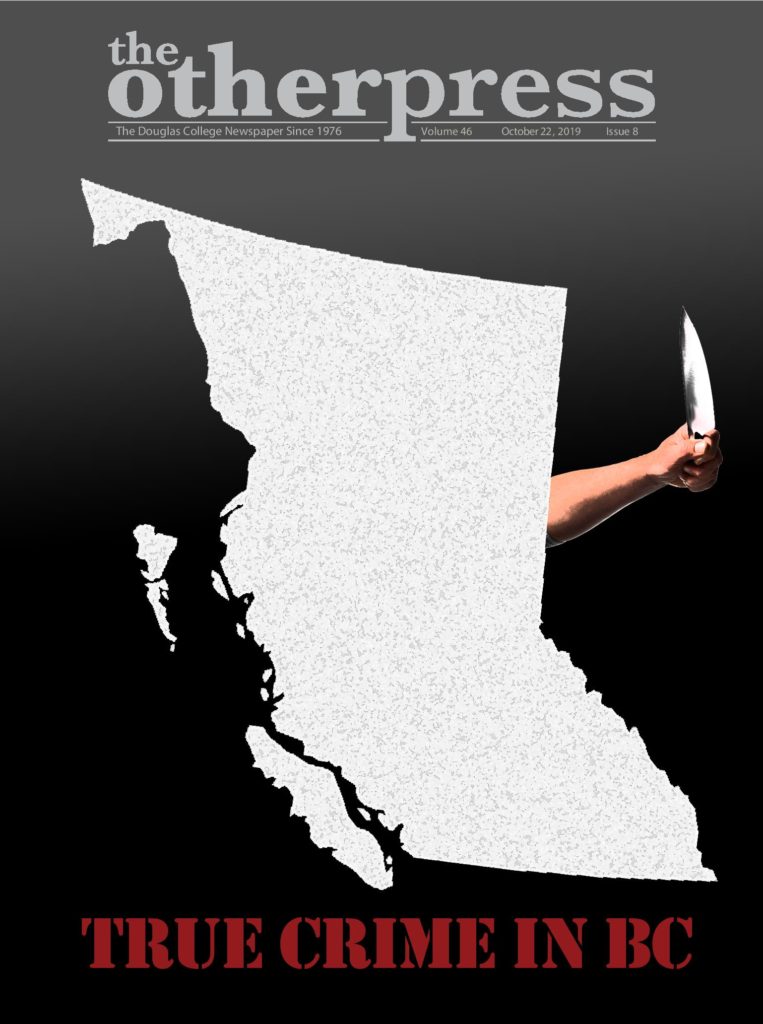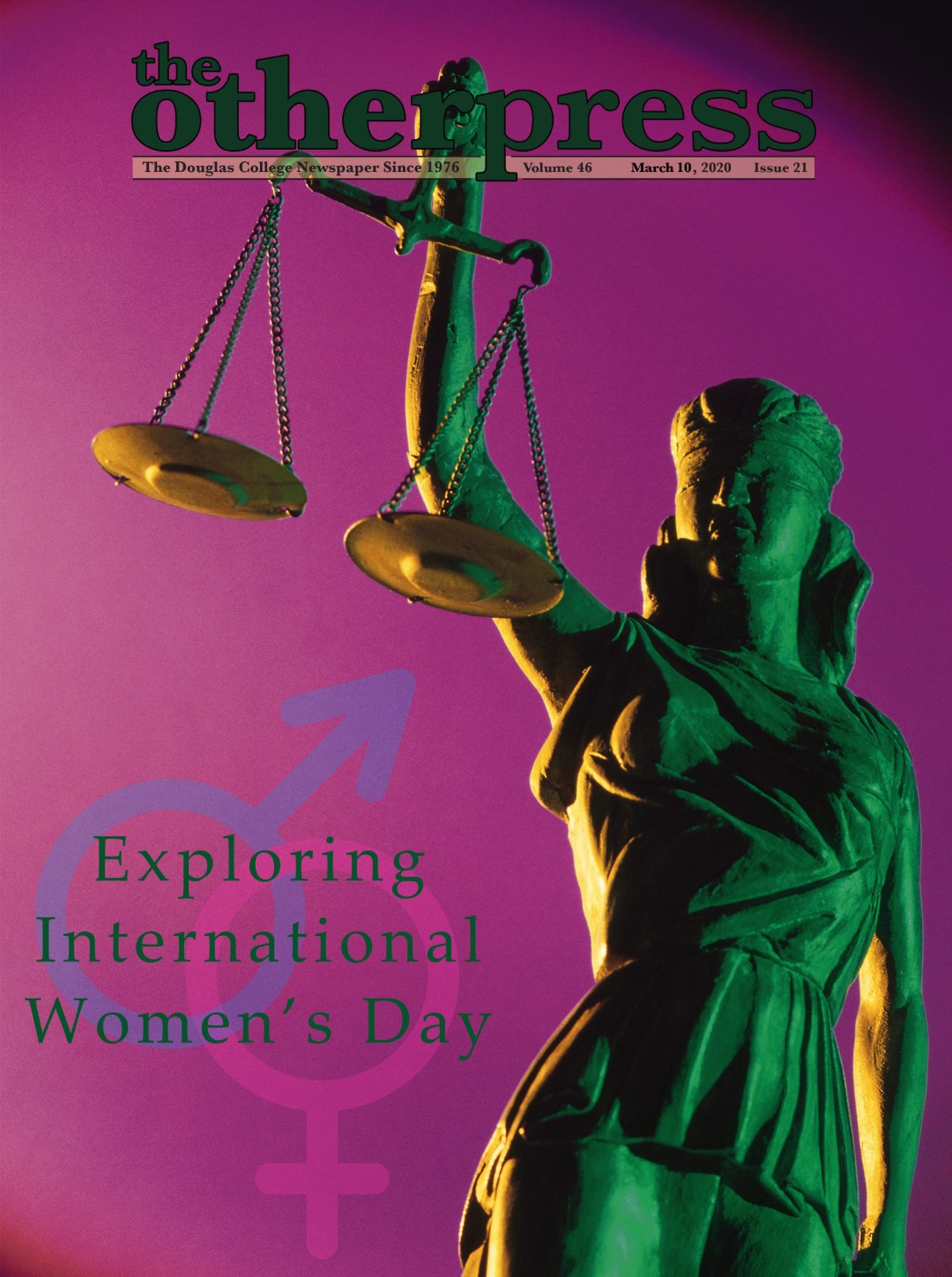
Two editors and two cases—each with two killers
By Jessica Berget, Editor-in-Chief and Janis McMath, Assistant Editor
Atif Rafay and Sebastian Burns
In 1994, two friends from a Vancouver high school—Atif Rafay and Sebastian Burns—were accused of murdering Rafay’s family. The Rafay family consisted of mother Sultana, a nutritionist, father Tariq, an engineer, and their disabled daughter Basma, and Atif—their teenage son.
The story begins with Rafay’s parents moving from Vancouver to Bellevue, Washington. During his breaks from school, Atif would often visit his family. During summer vacation, Atif and his friend Sebastian took a bus to visit Atif’s family home in Washington. A weekend of friends visiting family appeared seemingly innocent, until the night of July 12.
Atif and Sebastian went out that night to get dinner and see a movie. They came home in the wee hours of the morning, only to discover that Atif’s parents had been bludgeoned to death, and that his sister was critically injured. His sister died soon after the assault. Sebastian called 911 at 2 am to report the incident, and then the two waited outside for police. When police arrived on the scene, they had their suspicions that this was more than just a break-in gone wrong. The RCMP looked to the two young men, thinking that they murdered the Rafay family for the inheritance money.
The night of the murders, the duo had gone out to get dinner, to watch The Lion King at the local cinema, and to check out a Seattle club. Despite them having alibis, the police still suspected their involvement. Investigators found that whoever had committed the murders had also showered before they left the scene. It was also found that the crime scene seemed to be a staged break-in, meaning that someone had deliberately worked to make it look like a break-in had taken place. Other aspects police found odd was Atif’s calm manner, and also his mention of his Walkman and VCR being stolen.
After returning to Canada, the RCMP conducted an operation known as the “Mr. Big” technique, in which they would try to get the boys to confess to the murders. They posed as gangsters who were trying to help the pair by receiving their confession in exchange of helping them clear their names. The sting proved successful in that it got the boys to confess, but many question the validity of their confessions. In US at the time, the “Mr. Big” technique was illegal—yet it was still legal in Canada. The confessions, plus some newfound DNA, were enough to take Burns and Rafay to court.
After years of legal battles and court hearings, the two were found guilty of three counts of murder. They were given three consecutive life sentences with no chance of parole. Many doubt the court’s guilty verdict considering that the boy’s confession was obtained under false pretences. The boys have also maintained their innocence throughout their incarceration. Some believe that the murder was done by a religious group, since Rafay’s mother’s body was found with a shawl over her head facing the East—which has a religious connotation.
The pair’s case have also caught the attention of three innocence projects, according to the CBC. The Netflix series, The Confession Tapes also reports on this story and goes more into detail about the case in their two-part episode. As of 2018, both have exhausted their appeals.
Bryer Schmegelsky and Kam McLeod
This past summer on July 15, the bodies of tourist couple Chynna Deese and Lucas Fowler were found near the Alaska Highway outside Fort Nelson. The two were killed by gunshot wounds, and bullet casings were found near their bodies. In the words of Lucas’ father, Stephen Fowler, this disaster “was a love story that’s ended tragically. It’s the worst-ever love story because we now have two young people, who had everything before them, tragically murdered,” according to the Vancouver Sun. Police were shocked and confused at this point, and on July 18, police released the names of the victims in hopes of obtaining information that would help identify a motive or a suspect.
The next day on July 19, the body of an unidentified man is found near Dease Lake, two kilometers south of a burning truck that was also reported. Near this newly found body were bullet casings matching those found near the bodies of Fowler and Deese, linking the two crimes. The truck is identified as belonging to Kam McLeod—a 19-year-old—who at the time was not a suspect. RCMP identify the body as Leonard Dyck, a 64-year-old Botany instructor at the University of British Columbia. Police visit the family home of McLeod, who told police that he had left to go on a vacation to northern BC with his 18-year-old friend, Bryer Schmegelsky. McLeod’s family mentions that the two are good boys. With their eyes on the two, police locate footage of the teens at a gas station in Kitwanga in a silver Toyota RAV4—the car that Dyck drove when he was on his research trip. Police also locate footage of them at a hardware store purchasing black electrical tape and a crowbar. In gas station footage, the silver Toyota RAV4 can be seen with black racing stripes, which police believe is made out electrical tape in an effort to disguise their stolen vehicle.
On July 21, a witness reported an incident in which he pulled over on a highway to take a nap, and saw two teens holding guns, “Moving towards [him] in a tactical or hunting stance,” according to the report mentioned on GlobalNews. At this point, the two were certainly the main persons of interest. Suspicion heightened on July 22, when a burnt silver Toyota RAV4 is found in Gillam, Manitoba. A few days later, the silver Toyota RAV4 is confirmed to belong to Dyck. The Royal Canadian Air Force assisted RCMP in searching the Gilliam area, and soon found a damaged aluminum boat, McLeod’s backpack, wallet, and clothes were found, along with ammunition. Soon after the boys were found, dead due to suicide by gunshot. A camera with the boys’ last will and testament was found near their bodies, and in the video, the boys admit to the killings with “No remorse for their actions,” as stated by BC RCMP Assistant Commissioner Kevin Hackett, according to Global News.
The case unfortunately never went to trial because Schmegelsky and McLeod killed themselves. They did admit to committing the crimes, so hopefully that allows the mourning families to get some closure.
This BC case was shrouded in drama and controversy for several reasons. One of the reasons being the fact that the boys were known to have a gaming account online that featured imagery referencing to communism, far-right politics, the soviet flag, and the heraldic eagle from Nazi Germany. The killings did not seem to be race-related as their interests may suggest, seeing that all of their victims were Caucasian. Another controversy was the fact that one of the rifles used was purchased legally from a hunting-supply store—and police are still uncertain where the second rifle used came from. Lastly, much controversy was caused by the comments and actions of Alan Schmegelsky, Bryer Schmegelsky’s father.
Drama bubbled between the two families due to a book published by Alan. In an article in VancouverIsAwesome, it is mentioned that “While police were still hunting for the pair, [Alan] sent a 132-page book to reporters about his own life. He described it as a novelization of his son’s troubled life and his numerous encounters with police and courts, and said he wanted to highlight how what he called a “’broken system” shaped him and Bryer.’” Some of the excerpts of the book include that a psychologist diagnosed Alan as delusional, and his lawyer called him autistic at one point. On his book, Alan said that “My son and I have been treated like footballs. It’s time for some truth,” according to The Globe and Mail. In response to Alan’s painting of his son’s and his own life, Kennedy Deese, who is the sister of Chynna Deese, wrote a Facebook post that called out Alan Schemegelsky for “playing the victim,” according to VancouverIsAwesome.

